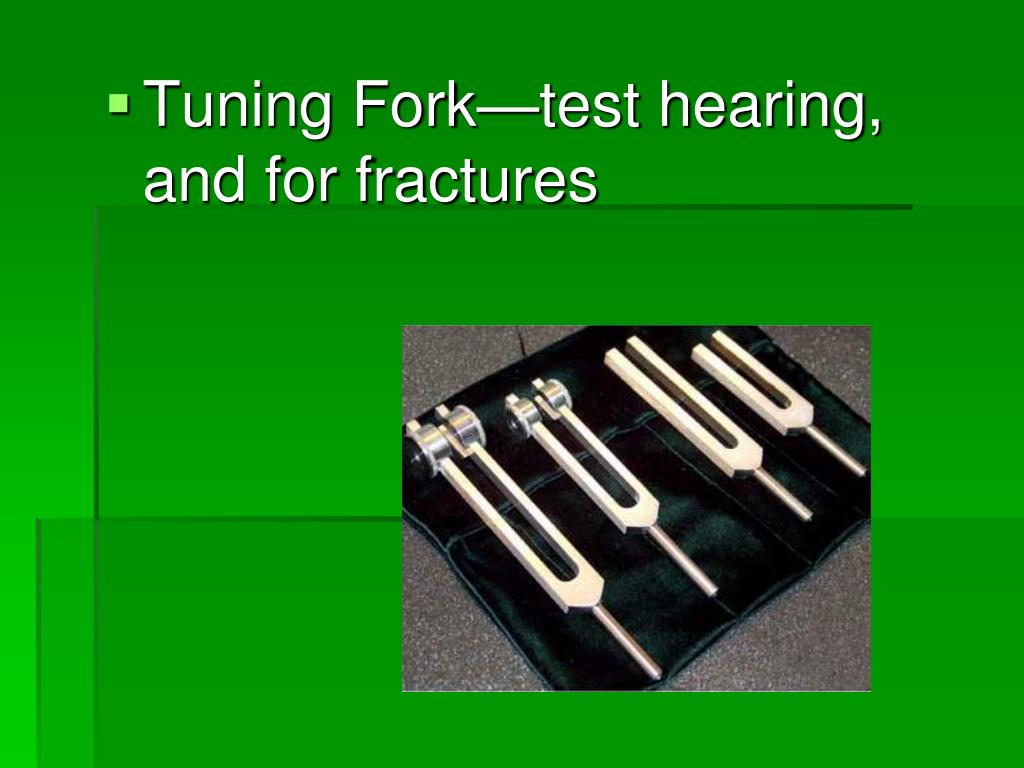
In this case, the patient cannot hear or can only faintly hear the tuning fork after it is moved from the mastoid process to the air adjacent to the ear canal. An abnormal finding of the Rinne test – termed a “negative Rinne test” – suggests BC is perceived more than AC. In this case, the patient can hear the tuning fork adjacent to the ear canal for a longer duration than when they heard the sound over their mastoid process. A normal finding – termed a “positive Rinne test” – indicates AC is perceived more than bone conduction. Once the patient can no longer hear the sound, the vibrating tuning fork is immediately moved adjacent to the ear canal about 3 cm from the ear, and the patient is again asked to report when they can no longer hear the sound.


The Rinne test is performed by placing the vibrating tuning fork onto the mastoid process and then asking the patient to report when they can no longer hear the sound. The Rinne test differentiates between sound transmission by AC and sound transmission by bone conduction. In patients with unilateral conductive hearing loss, the Weber test lateralizes to the affected ear (i.e., the sound of the tuning fork will be heard in the worse ear). In patients with unilateral sensorineural hearing loss, the Weber test lateralizes to the unaffected ear (i.e., the sound of the tuning fork is heard louder in the better ear). In patients with normal hearing or symmetrical conductive hearing loss, the Weber test does not demonstrate lateralization (i.e., the sound of the tuning fork is heard equally in both ears). The Weber test is performed by placing the vibrating tuning fork equidistant from both ears on either the vertex, forehead, bridge of the nose, or chin and asking the patient if the sound is heard loudest in one ear or equally in both ears. These tests are performed using a tuning fork with a frequency of 256 Hz, 512 Hz, or 1024 Hz, with 512 Hz being the most commonly used frequency 128 Hz tuning forks are not used for the Rinne and Weber tests but are instead used in neurological evaluations. They are screening tests and are not considered to replace formal audiometry. The Rinne and Weber tests are designed to stimulate bone conduction and are used as a part of the initial evaluation of hearing loss. Bone conduction evaluation methods involve using specialized equipment, including an oscillator to produce vibrations at predetermined frequencies and amplitudes.

Modern bone conduction evaluation is frequently performed as a component of audiometry testing, especially when it is clinically useful to distinguish between sensorineural and conductive hearing loss. Early methods involved tuning forks and including the Weber and Rinne tests, which are still used today.

Methods for testing BC have existed since the 19th century. Ultimately, both AC and bone conduction cause a vibration of the cochlea's basilar membrane, a structure attached medially to the osseous spiral lamina, resulting in stimulation of the cochlear nerve. Multiple mechanisms are involved in bone conduction sound transmission, including the inertial force affecting cochlear fluids and middle ear ossicles, pressure changes in the ear canal, and pressure changes transmitted through a third window of the cochlea (which is a pathologic, abnormal structure). Bone conduction is in contrast to the route of sound transmission known as air conduction (AC), in which sound is transmitted in the air through the ear canal to the ossicles of the middle ear (malleus, incus, stapes) via the tympanic membrane, thus stimulating the sensorineural organs of the inner ear. Bone conduction (BC) refers to the phenomenon in which vibrations are transmitted through the bones of the skull to the cochlea and the associated sensorineural structures resulting in the perception of sound.


 0 kommentar(er)
0 kommentar(er)
